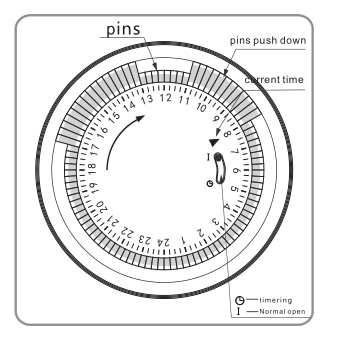**The World's Smallest Computer Is Now Available**
On March 19, according to reports from foreign media, IBM unveiled the world’s smallest computer at the IBM Think 2018 conference. This tiny device is smaller than a grain of salt and boasts the computing power equivalent to a 1990s x86 chip. Without a microscope, it’s nearly impossible to see with the naked eye. Despite its minuscule size, it doesn’t sacrifice performance and is designed to handle complex tasks.
In terms of cost, IBM revealed that the manufacturing cost of this computer is less than 10 cents. Future versions are expected to include up to 100,000 transistors, enabling it to monitor, analyze, communicate, and even process big data. It can also perform basic AI tasks like data classification and screening. This breakthrough opens up new possibilities for real-time data processing in various fields.
Interestingly, the University of Michigan previously developed the "Michigan Micro Mote," a computer measuring just 1 cubic millimeter. However, IBM’s latest creation pushes the boundaries further, offering more functionality in an even tinier package.
What makes this computer unique is its ability to perform multiple functions—such as capturing images, reading temperature, and recording pressure—despite its size. Developers hope it will find applications in medicine, industry, and beyond. For example, it could be implanted in the human body to monitor health metrics or used to track the condition of oil wells.
IBM’s head of research, Arvind Krishna, predicts that ultra-microcomputers similar in size to a speck of dust or a grain of salt will become widely embedded in everyday products and equipment within the next five years. If this vision comes true, we may soon see these tiny computers integrated into everything from consumer goods to industrial systems.
Currently, IBM is still testing the first prototype, and the official launch date remains uncertain. However, the potential impact of such technology is immense. It could revolutionize how we manage supply chains, prevent fraud, and enhance data security through blockchain integration.
Looking back at the history of computing, the journey has been remarkable. From the abacus and slide rule to the first electronic digital computer, ENIAC, which weighed 30 tons and occupied over 170 square meters, the evolution of computers has been nothing short of extraordinary.
Over the past half-century, computers have evolved through four generations: vacuum tubes, transistors, integrated circuits (ICs), and very large scale integrated circuits (VLSI). Each stage brought improvements in speed, size, and efficiency. Today, we're on the brink of the fifth generation, which promises intelligent systems capable of reasoning, learning, and adapting—ushering in a new era of computing.
As we move forward, the role of microcomputers will only grow. With their increasing power and decreasing size, they are set to become an integral part of our daily lives, transforming industries and reshaping the way we interact with technology.
Mechanical Timer
24 hours mechanical Timer
Instant indicator
Min.setting time:15 minutes. Max.setting timer:24 hours
With hand switch,can be switched to operating and
setting at any time
Instructions:

1. Set program: 1 pin is equivalent to 15 minutes. Determine desired start time and push down pins until desired
off time.
For instance, if you want electrical devices to work from 8:00am to 11:00am and from 13:00pm to 17:00pm, you
just need to put down allthe pins between the three period time.
2. Set the current time: Turning the dial clockwise until the arrow pointing to
current time.
For example,if now it is 8:00 am, please turn the dial and make sure the
arrow point to 8. (See the picture.)
3. Plug the electrical device directly into the timer. Make sure the electrical
device is power-on.
4. Plug the timer into electrical outlet and the electrical device will be work
according to the setting program.
Note: = Normal Ope n = Timing
Make sure the switch on the Timing position. If it
is on the [Normal Open" mode, the electrical device is
always power-on and the timer function no work.
Specifications:
Rated Voltage, Current and Power
|
As shown on the label
|
Time Setting Range
|
15minutes24hours
|
Working Temperature
|
-10℃?+55℃
|
Operation
|
Clockwise
|
Insulation Resistance
|
>100M
|
Inherent Loss
|
≤1W
|
Application:
1. To enable high-power electric appliances to run automatically at off-peak time if there is different electricity
price according to different periods of time in some areas.
2. To use for electric appliances which need time control, such as water heaters, air conditioners, drinking
fountains, rice cookers, advertising lights and so on.
3. To control the charging time. For example, battery of electric bikes or mobile phones, storage batteries, etc.
4. Occasions which need switch on/off frequently, like interval spray irrigation for flowersand lawn, cyclical
adding oxygen to fish jar, fountains and so on.
5. Home safety precautions and lighting.
Caution:
1.D o not exceed the maximum ratings of the timer.
2.M ust reset the current time after power failure.
3.D o not plug the timer directly into the working electrical appliances.
4.U nless changing the setting, keep the program same every day.
5.D o not disassemble timer by yourself. Professionals service are needed for maintenance.
6.T his item is only for indoor use.
Mechanical Timer, mechanical timer socket, 24hr mechanical timer, mechanical timer plug, mechanical timer adaptor
NINGBO COWELL ELECTRONICS & TECHNOLOGY CO., LTD , https://www.cowellsocket.com
